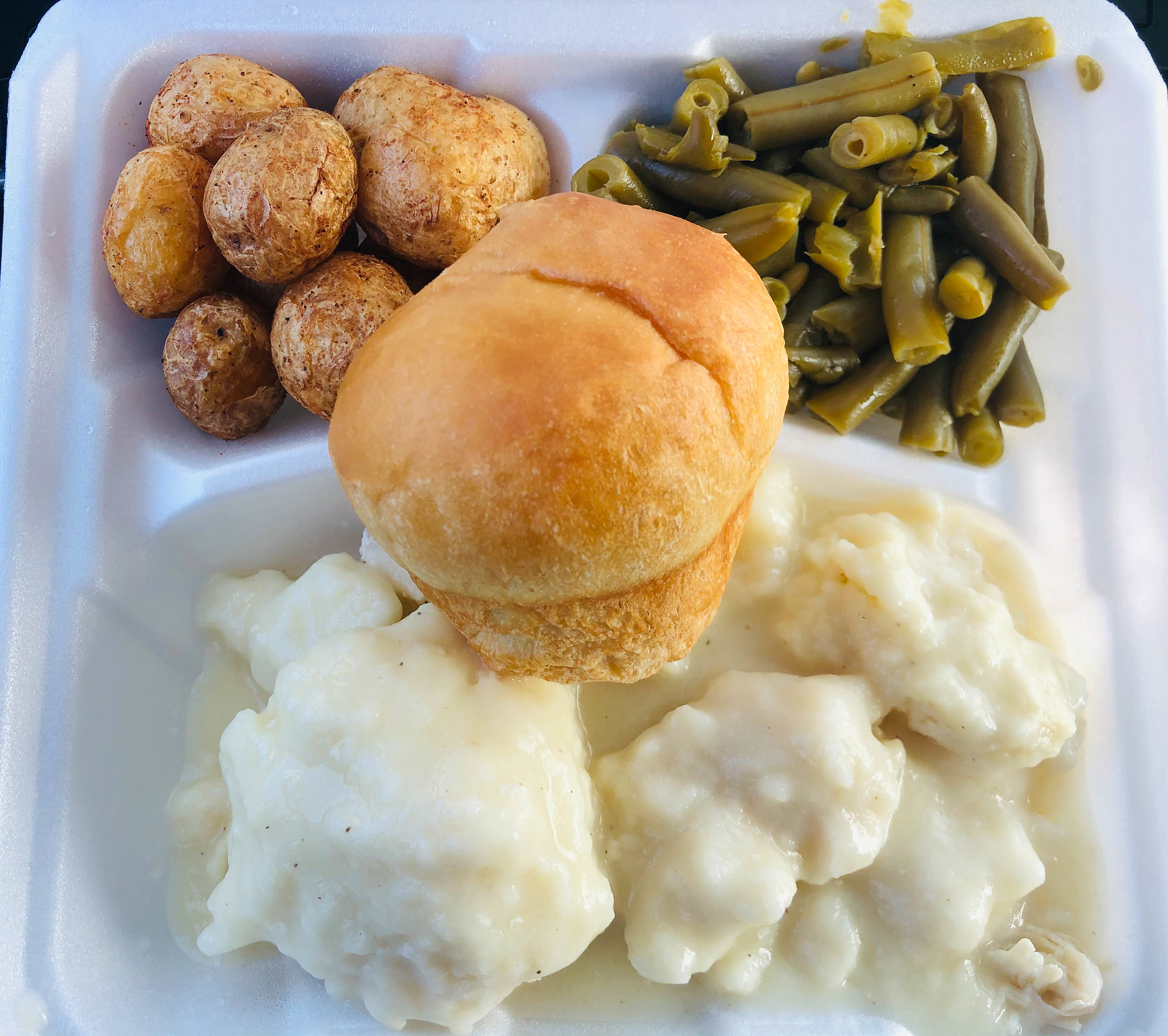
Here's my latest column from the Charleston Gazette-Mail:
When you read the words “chicken & dumplings,” what kind of dish do you envision?
Does the dish feature a thick, creamy broth made by simmering chicken with vegetables and herbs? The dumplings are soft and pillowy, made by dropping spoonfuls of biscuit-like dough into the simmering broth. The dumplings cook in the broth and absorb its flavors, resulting in a rustic and hearty dish that highlights the light and fluffy irregular shaped dumplings.
Or, does the dish feature flat, noodle-like dumplings instead of the fluffy dumplings? The dumplings are rolled out and cut into strips before being added to the chicken broth.
West Virginia is at the cross-section of Appalachia that overlaps both the traditionally southern-style chicken & dumplings and the Pennsylvania Dutch-style chicken & dumplings.
That means it’s possible that images of both of these dishes popped up in your mind. At least, that’s the case for this Yankee West Virginian.
And, of course, there are myriad variations with regional twists and preferences - like serving the dish over mashed potatoes or using Bisquick for quick and easy drop dumplings.
History often credits the Great Depression with the creation of the dish in an effort to stretch a dollar - and chicken carcass. Others may credit French-Canadians, and yet others the Germans.
What is more likely is: Early Appalachian settlers from England, Scotland, Ireland and other parts of Europe brought their culinary traditions to the region, which have adapted and evolved over time.
Many cultures have their own version of a dumpling. Poland has the pierogi. China has the wonton. Italy has gnocchi. Japan has gyoza. Nepal has the momo. India has samosas. Jewish groups have the matzoh ball.
Dumplings are a universal comfort food language. And, the southern United States and northern United States have different preferences.
Early cookbooks help trace the dumpling’s lineage - from Mary Randolph's The Virginia Housewife’s (1836) recipe for "meat dumplins," which is a meat pie pastry that is boiled, to Lettice Bryan’s The Kentucky Housewife’s (1839) recipe for “Suet Dumplings,” which states paste should be rolled out and cut into small squares, or made into small round balls and cooked with the meat with which they are to accompany.
“Bryan's recipes seem to straddle the line between dropped dumplings (boiled balls of dough) and rolled dumplings (pastry rolled and cut into thick, flat, wide noodle shapes). These emerged after the Civil War as the two most prominent forms of dumplings in the U.S. Both of them later were incorporated into recipes known as chicken and dumplings, and they define the primary difference between the Northern and Southern variants of the dish,” according to website Serious Eats.
West Virginia straddles the Mason-Dixon Line, which is often the cultural marker of division between the north and south. And its position as the northern-most southern state and southern-most northern state is reflected in its foodways.
Chicken and dumplings has a long-standing history in the Appalachian region, where it has been a beloved comfort food for generations - no matter whether it’s made with rolled dumplings or dropped dumplings.
It is still a practical and filling meal, often adapted to make use of readily available ingredients. Appalachian families often raised their own chickens and grew their own vegetables, making chicken and dumplings a staple dish.
The specific variations of chicken and dumplings found in Appalachia vary from family to family and community to community, reflecting the diverse cultural backgrounds and regional influences.
Chicken and dumplings continue to be cherished in Appalachian cuisine, passing down through generations as a way to connect with the region's culinary heritage and foster a sense of comfort and connection.
All work property of Candace Nelson. Powered by Blogger.


0 comments